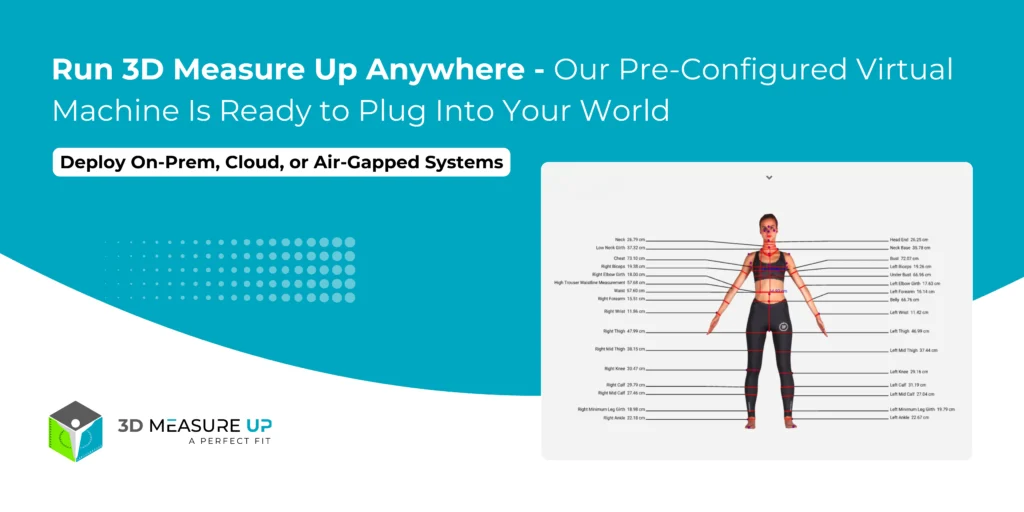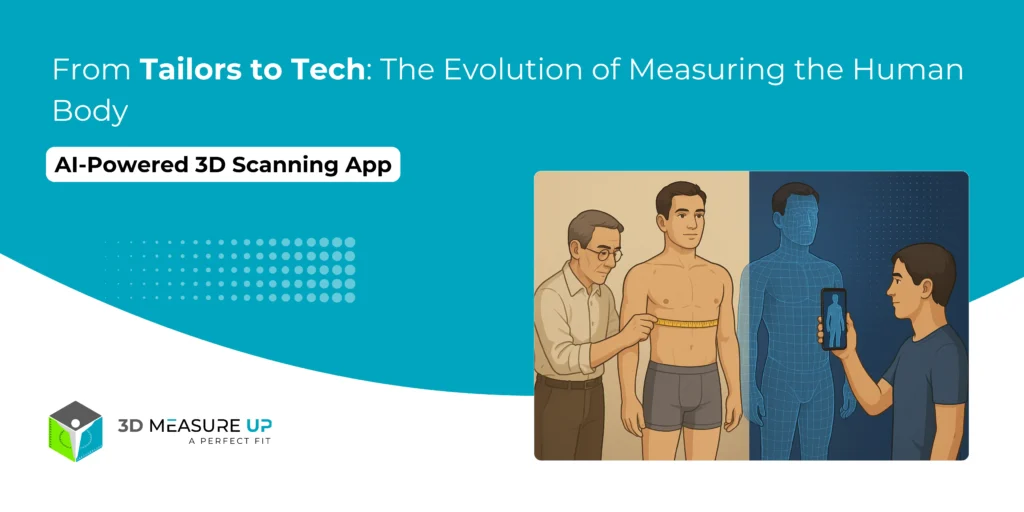Run 3D Measure Up Anywhere: Our Pre-Configured Virtual Machine Is Ready to Plug Into Your World
Run 3D Measure Up Anywhere: Our Pre-Configured Virtual Machine Is Ready to Plug Into Your World Working with 3D body scans comes with a familiar challenge — capturing the scan is easy, but turning that raw scan into stable, repeatable, and application-ready measurements is the real hurdle. That’s where 3D Measure Up excels. Now, adopting 3D Measure Up inside your workflows is easier than ever. We’ve packaged the entire measurement engine into a pre-configured Virtual Machine (VM) you can deploy anywhere: On local systems using VirtualBox or VMware In private data centers or air-gapped environments On public cloud services like AWS, Azure, or Google Cloud No more dependency headaches or complex setups. Simply import, start, and begin using your fully configured measurement engine. What Is the 3D Measure Up Virtual Machine? The 3D Measure Up VM is a self-contained Linux appliance that includes: The complete 3D Measurement Engine All required libraries and runtime dependencies Pre-configured REST APIs A secure, isolated environment Think of it as “3D Measure Up in a box” deploy it anywhere, and connect your apps directly to it. Desktop, mobile, web, and scanner software, everything integrates effortlessly. Why a VM-Based Deployment? Every industry has unique technical and compliance needs: A scanner manufacturer needs a bundled on-site solution A hospital or defense unit needs guaranteed data isolation A fashion brand wants flexible cloud scaling A research institute needs identical environments across labs The VM offers a single answer to all of them: a portable, reproducible, production-grade measurement engine that adapts to your deployment environment. Key Benefits of the 3D Measure Up VM 1. Deploy Anywhere — Local, On-Prem, or Cloud Local / On-Prem: Runs reliably via VirtualBox or VMware Ideal for clinics, boutiques, labs, and manufacturing units All data stays within your network Cloud (AWS, Azure, Google Cloud, Private Clouds): Launch as an instance image Scale vertically or horizontally Great for high-volume scanning services or global platforms 2. Lightning-Fast Time-to-Value The traditional setup involves endless installation, configuration, and troubleshooting. With the VM, deployment becomes: Import → Start → Call the API → Done Your team can instantly: Validate the 3D Measure Up Web Application Integrate via REST APIs Launch PoCs and pilots in days instead of months 3. Ideal for Sensitive & Regulated Environments For healthcare, defense, and research industries, data privacy is non-negotiable. The VM enables: Full data ownership Air-gapped deployments Compliance-friendly architecture Isolated execution environment You get SaaS-like capability with complete local control. 4. Consistent Performance at Any Scale Since we control the full software stack inside the VM, performance is Stable Predictable Tuned for high-volume processing Need more capacity? Just deploy more VM instances — scaling becomes modular. 5. Simple Integration With Any Application Stack The VM exposes a set of services/APIs compatible with: Desktop apps (C++, C#, Python, etc.) Web frameworks (Node.js, Java, .NET, Python, PHP) Mobile apps through backend services OEM scanner or CAD/CAM software You get measurement outputs like: Circumferences Lengths Girths Landmarks Metadata Use these for sizing, pattern generation, clinical workflows, analytics, or fit intelligence. 6. Perfect for OEM & Partner Integrations If your product uses 3D scans, you can bundle the VM as your measurement backend. Benefits include: Clear system boundaries Stable API-driven integration Simplified support Flexible deployment options Great for scanners, research tools, clinics, footwear, apparel, and fitness platforms. Example Use Cases Scanner Manufacturers Bundle the VM with your hardware to instantly enable measurement capabilities. Apparel & Footwear Brands Use the VM as your backbone for sizing engines in stores, apps, or online platforms. Orthotics, Prosthetics & Healthcare Keep patient data inside hospital networks while enabling automated 3D measurements. Defense & Security Deploy in high-security or classified environments without external dependencies. Universities & Research Labs Achieve consistent measurement results across distributed teams and environments. Why This Matters for Your Product Roadmap Deployment flexibility is as important as measurement accuracy. With the 3D Measure Up VM, you gain: Confidence in a reliable, tested, isolated system Freedom to deploy where your industry requires Faster integration and faster innovation Whether you are scaling a scanning platform, upgrading devices, or modernizing clinical workflows, the VM is your ready-to-deploy solution. Want to Try It? If you're ready to: Test the VM in your environment Connect it to your existing scanners Explore cloud, on-prem, or hybrid deployment options Our team can help you set up a pilot tailored to your needs. Contact Us Today 3D Measure Up Virtual Machine Your 3D measurement engine, wherever you need it to run.




